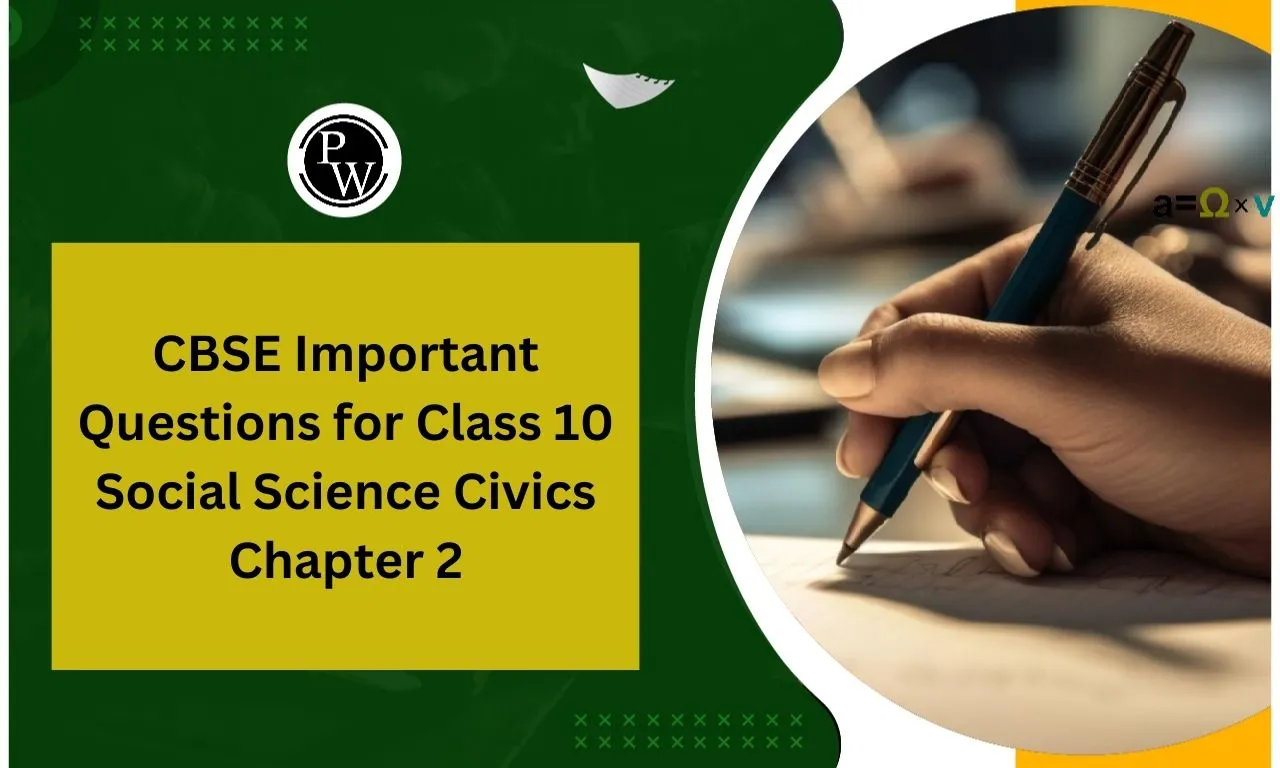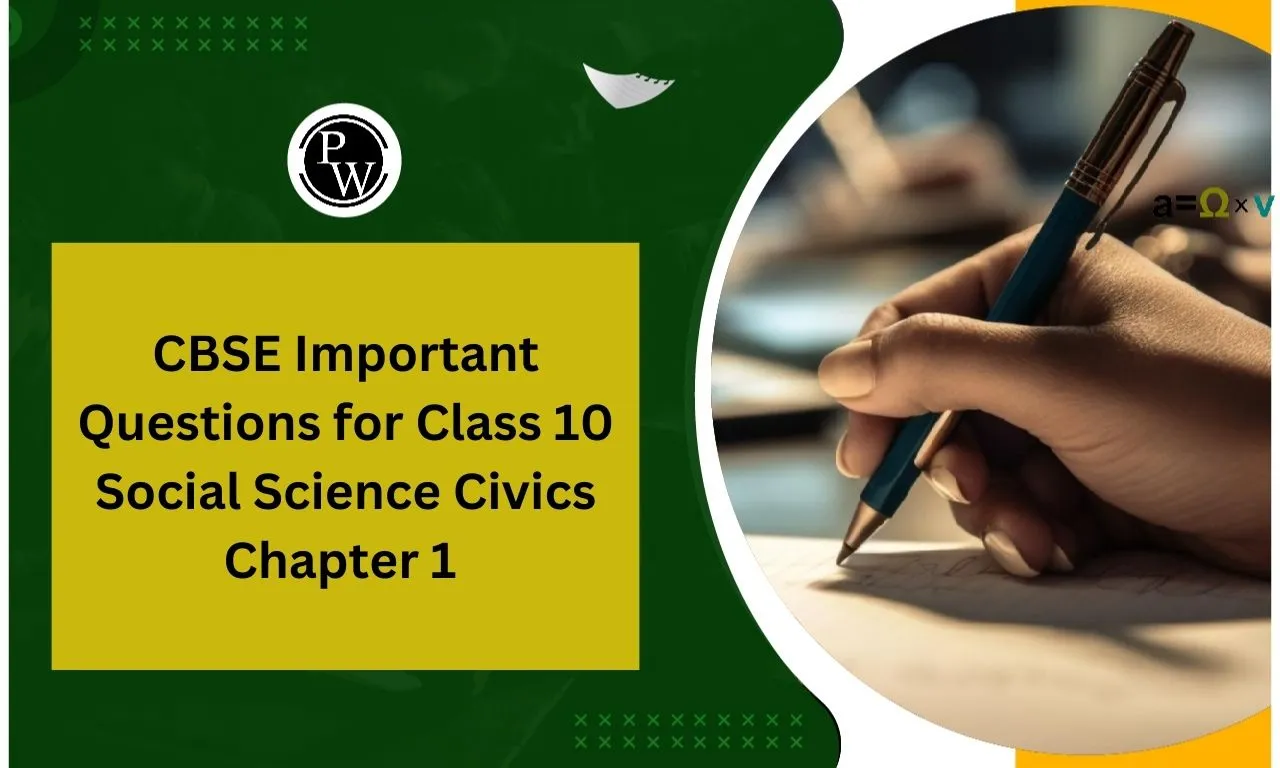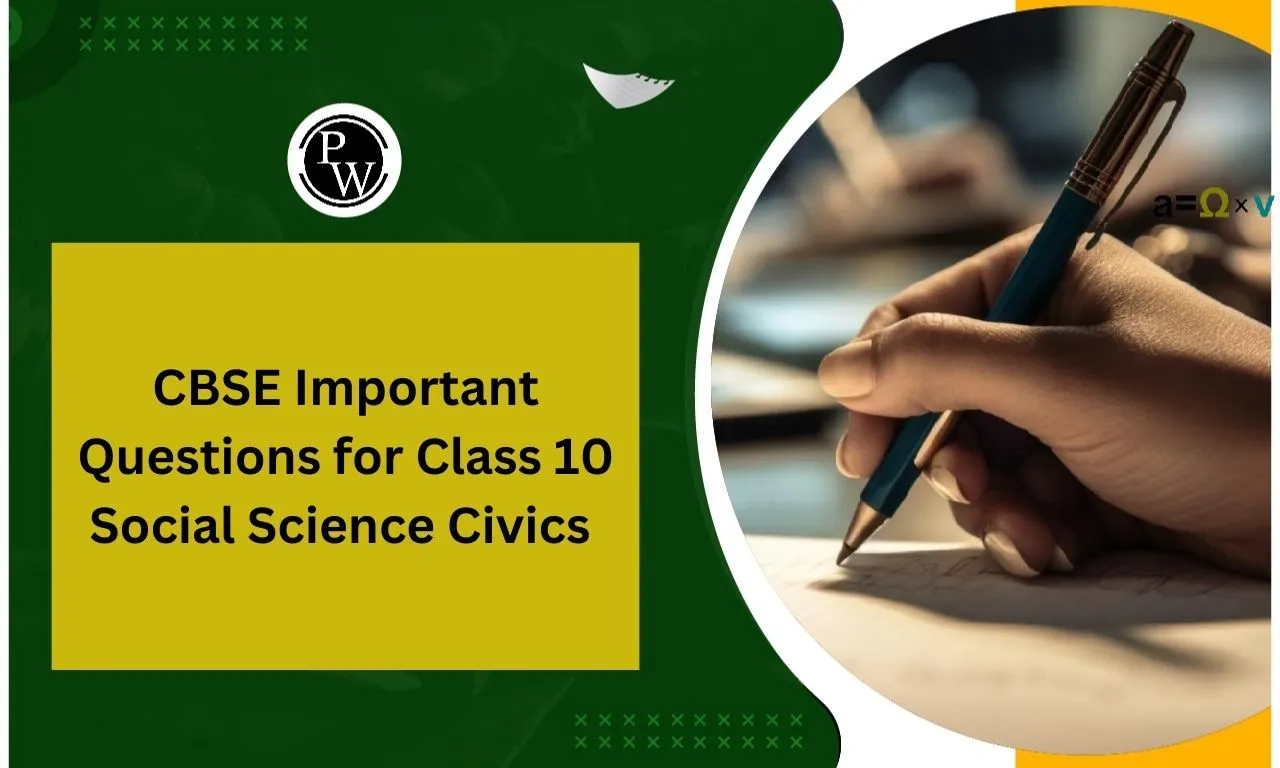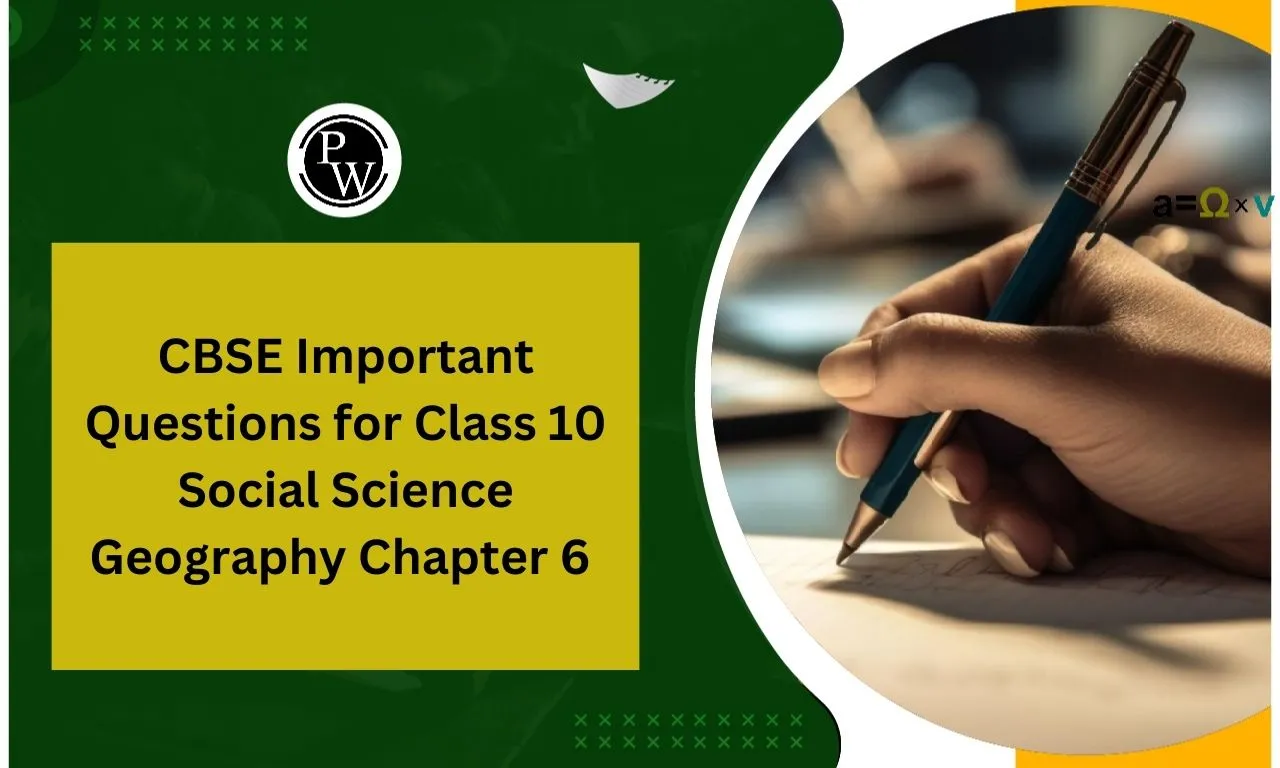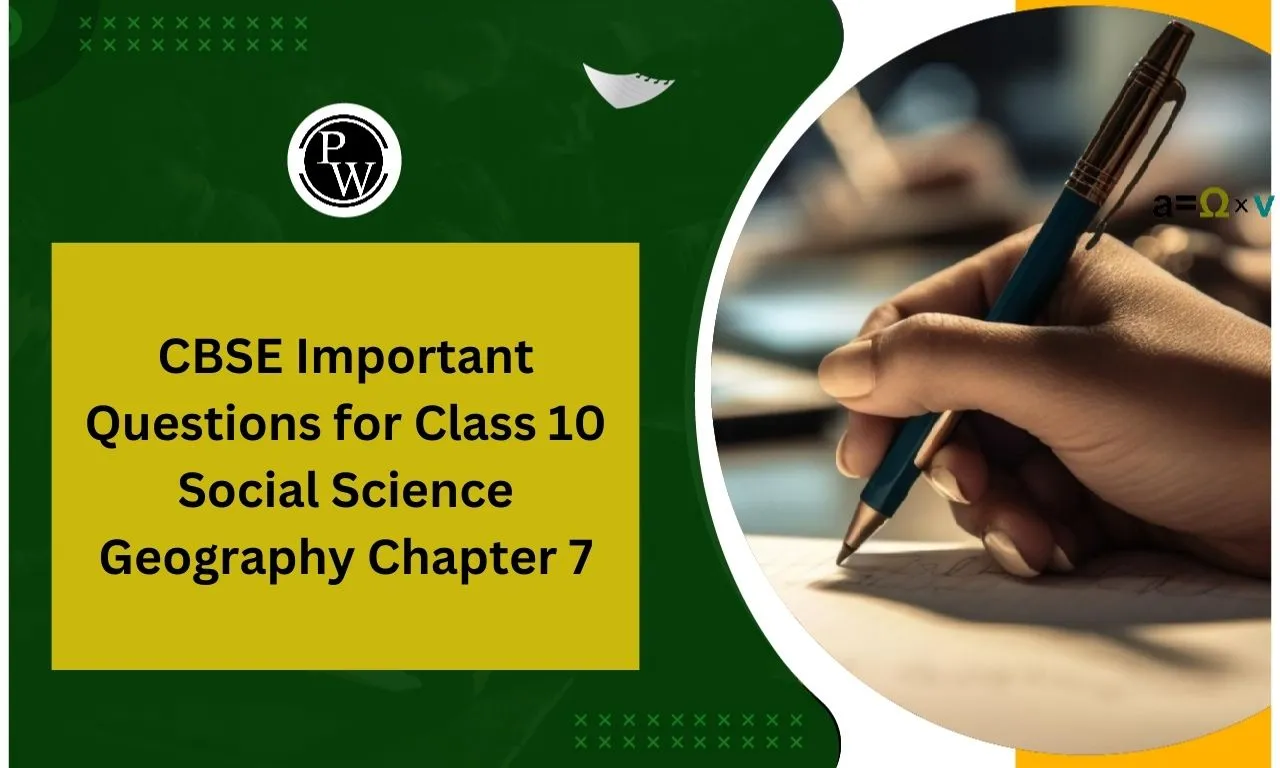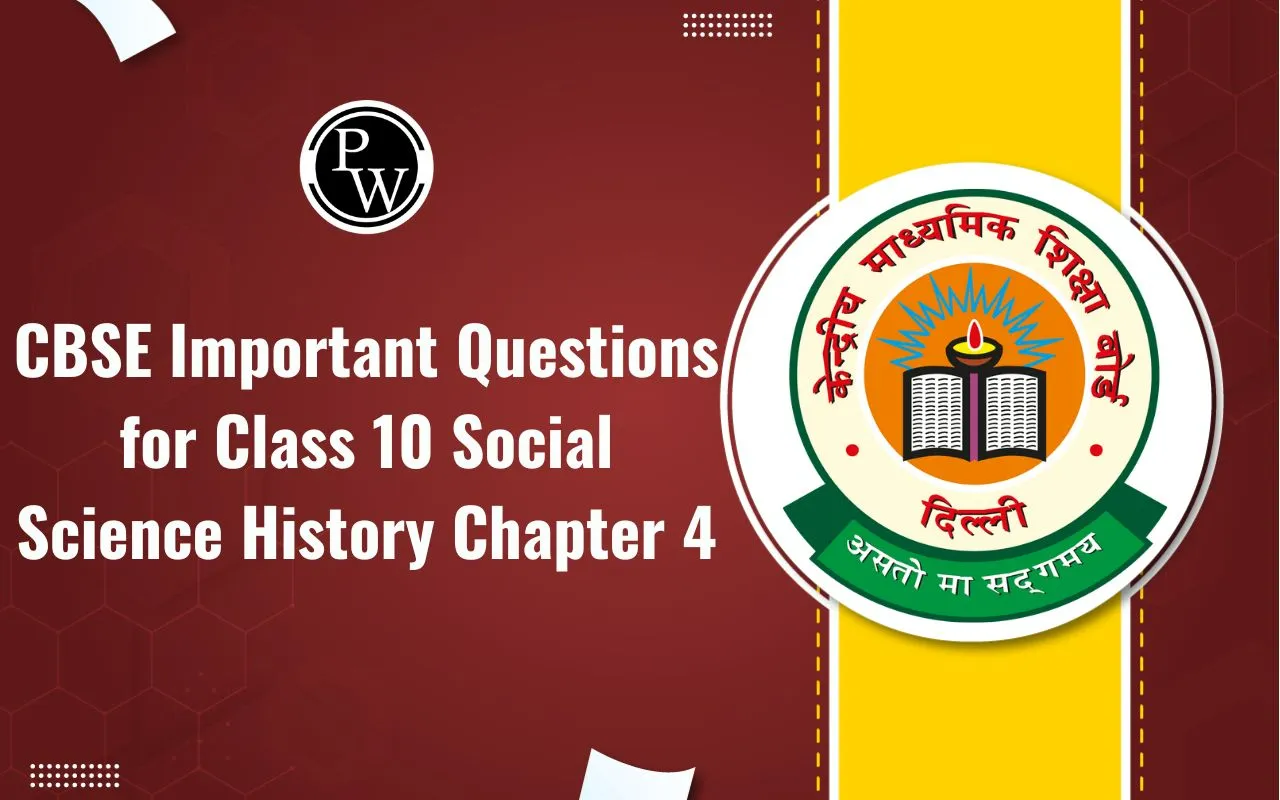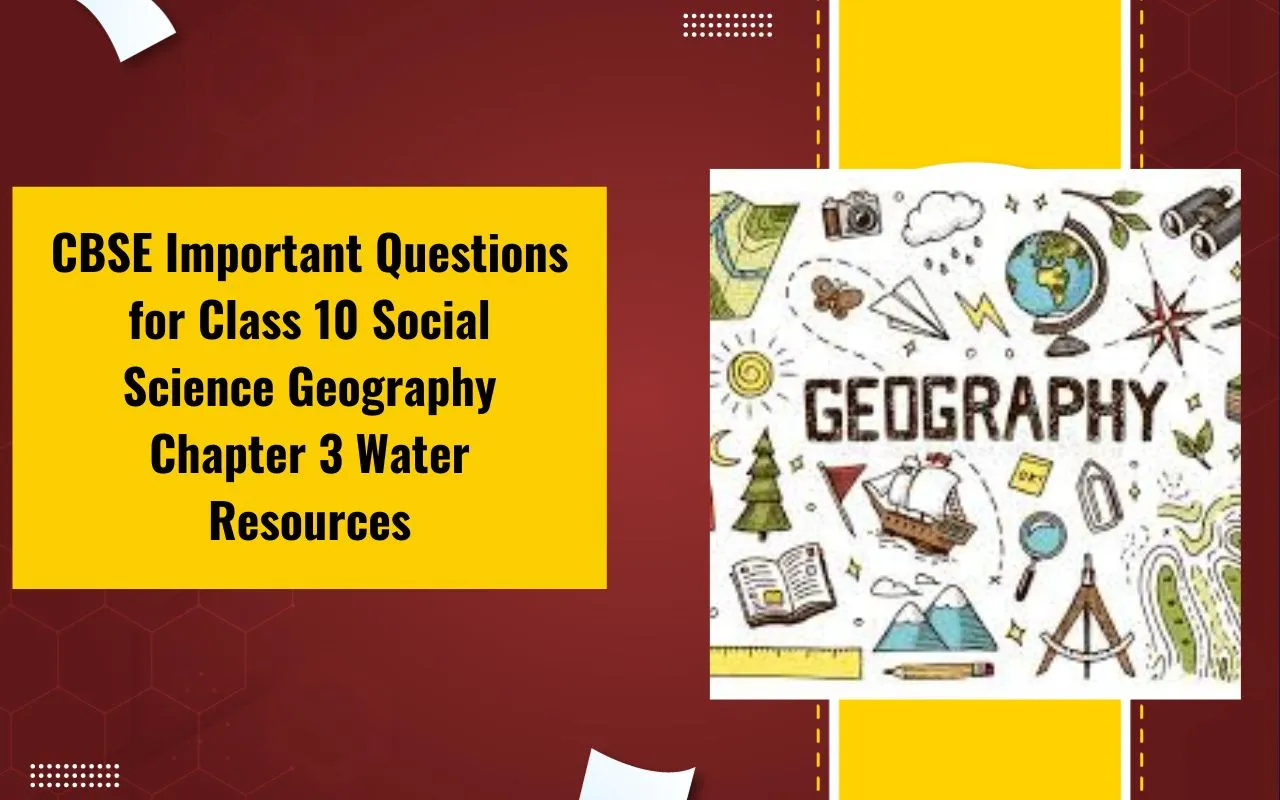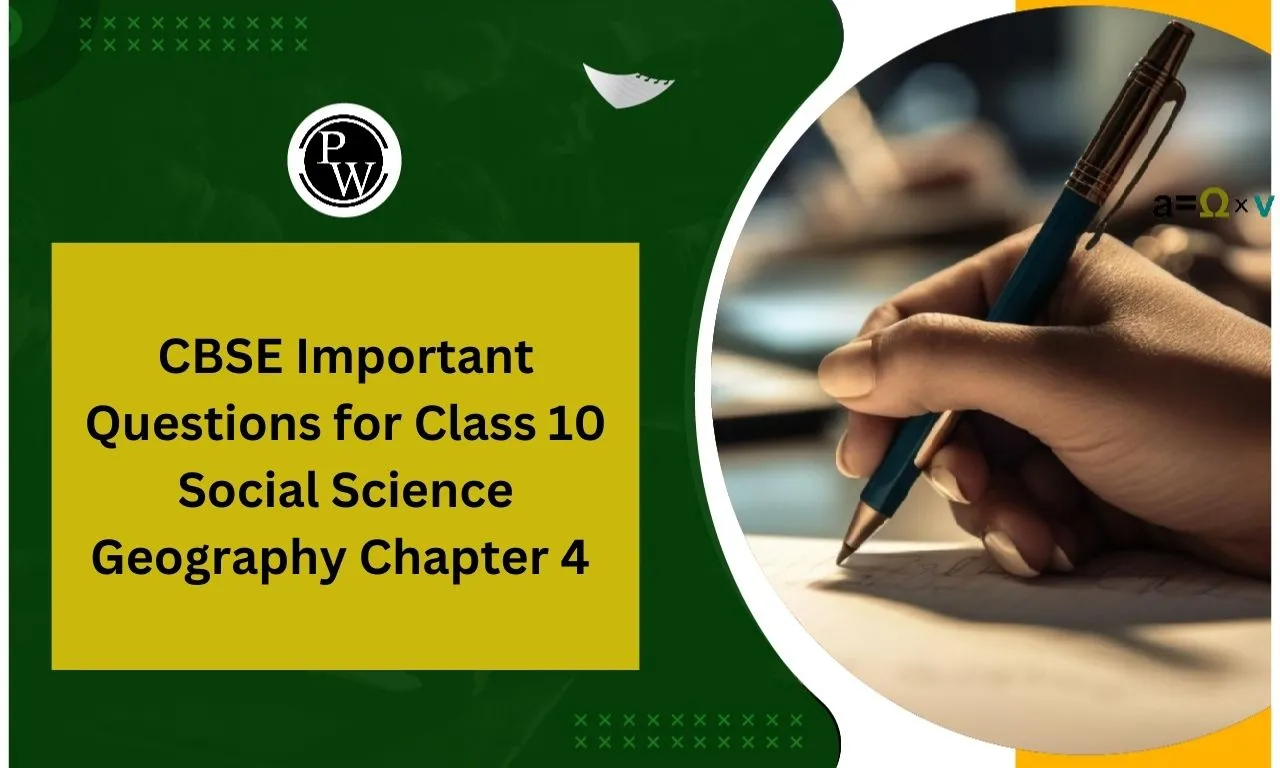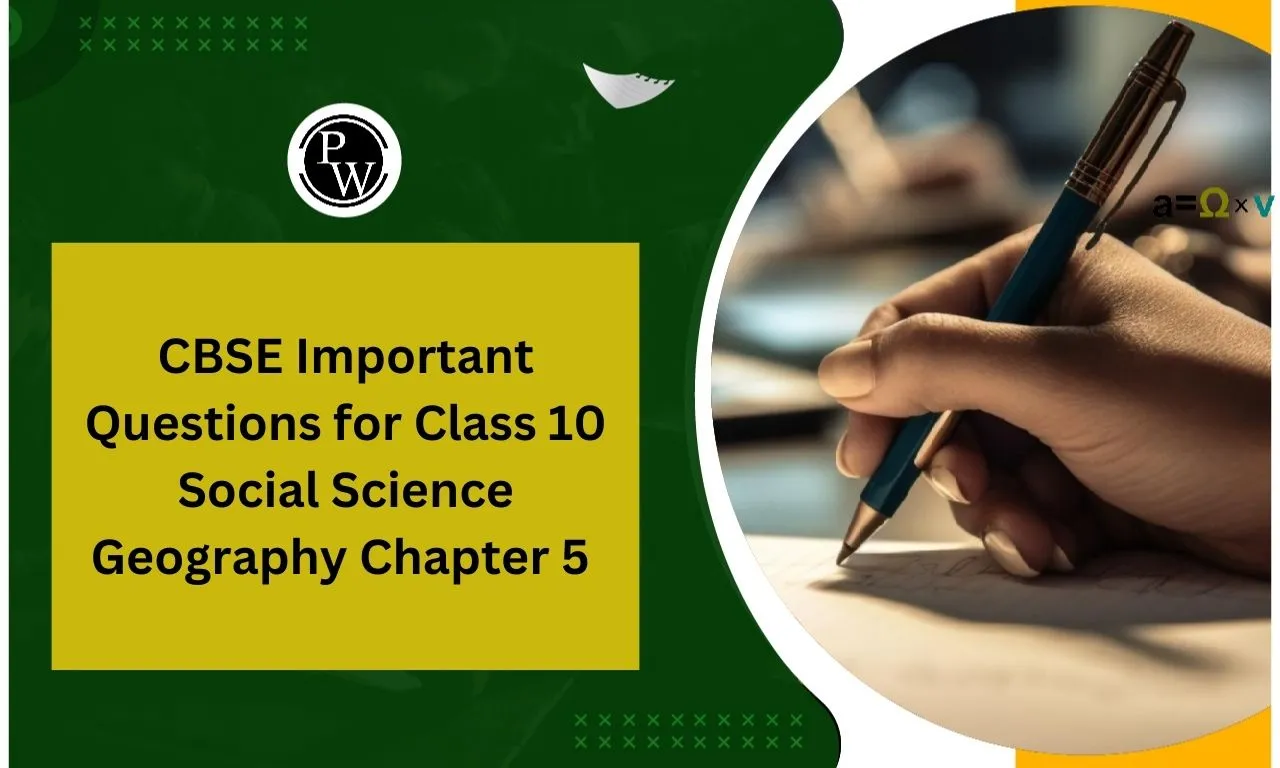
CBSE Class 10 Science Notes Chapter 15: The surroundings include both living and nonliving things that exist together naturally. It involves a dynamic interaction of weather elements, living beings, and natural resources.
All these factors directly affect human survival and economic activities. The overall surroundings are crucial for life on Earth. According to CBSE Class 10 Science Notes Chapter 15 Our Environment, the surroundings include both living (biotic) and non-living (abiotic) factors. Living factors refer to living things, while non-living factors refer to things without life. In short, the surroundings include air, water, land, and three main parts - living things (humans and other creatures), naturally occurring non-living things, and human-made things. All these aspects are thoroughly explained in CBSE Class 10 Science Notes Chapter 15 by PhysicsWallah. PhysicsWallah is a platform that offers free CBSE Solutions (NCERT) and other study materials for students.CBSE Class 10 Science Notes Chapter 15 PDF Download
CBSE Class 10 Science Notes Chapter 15 Our Environment
Biodegradable and Non-biodegradable Wastes, Ecosystem, Components of Ecosystem. The environment consists of our surroundings, like the air (or atmosphere), water bodies, and soil (land). It also includes all living things such as plants, animals, humans, and tiny organisms like bacteria and fungi, known as decomposers. Waste materials generated by human and animal activities can be harmful to some extent and can be classified into two main groups. 1. Biodegradable Wastes: Materials that can be broken down by living things are called biodegradable. These materials break apart because of the work done by fungi, bacteria, and other living things. The temperature and sunlight are also important in making biodegradable things break down. Examples of biodegradable things include food scraps, leaves from trees, urine and poop, waste from farms, paper, wood, fabric, and cow poop. 2. Non-Biodegradable Wastes: Materials that cannot be broken down by living things. These materials can be in solid, liquid, or gas states. They don't react with the environment and stay for a long time, possibly causing harm to different parts of the ecosystem. Examples of these materials are DDT (Di-chloro-diphenyl trichloroethane-in-phenyle the chloroethane), insecticides, pesticides, mercury, lead, arsenic aluminium, plastics, polythene bags, glass, and radioactive wastes. These materials that don't break down naturally are significant sources of pollution in the environment. Harmful effects of biodegradable and Non-Biodegradable Substance- Waste harms the beauty of nature, making our environment messy.
- When these wastes break down, they create a bad smell that spreads to nearby places.
- The waste can block drains, forming pools that attract mosquitoes. These mosquitoes carry diseases like malaria and dengue.
Ecosystem:
An ecosystem is a self-contained group of living things (like plants, animals, and decomposers) and their surroundings (such as soil, air, and water). For instance, a forest, a pond, a lake, or a green area. Within an ecosystem, there is a constant exchange of energy and matter between living and nonliving parts. Ecosystems can be natural or human-made. Examples of natural ecosystems include grasslands, forests, seas, rivers, deserts, mountains, ponds, and lakes. Deserts, grasslands, and mountains are examples of terrestrial ecosystems (land-based ecosystems). Ponds, rivers, lakes, and seas are examples of aquatic ecosystems (water-based ecosystems). Man-made ecosystems include gardens, crop fields, parks, aquariums, etc.Components of Ecosystem:
There are two components of an ecosystem : (i) biotic component and (ii) abiotic component. 1. Biotic component: It includes three types of organisms : (a) Producers: All plants that are green and blue-green algae can make their own food (sugar and starch) from non-living things by using light energy (photosynthesis). That's why they are known as producers and also called autotrophs. Planktons are tiny or very small living things that float freely on the top of water in places like ponds, lakes, rivers, or oceans. There are two types of planktons: Phytoplanktons and Zooplanktons. The really small water plants that float freely on the water's surface are called phytoplanktons. The tiny water animals that float freely in water are called zooplanktons. An example of zooplankton is the freely floating protozoa. (b) Consumers: These are living things that eat other living things or what they make for their meals. Every animal falls into this group. These eaters rely on plants or other creatures for their meals, either straight or indirectly. They get their food by munching on other living things or what those things produce. Common consumers include humans, goats, deer, fish, lions, cows, buffaloes, and more. These waters can be sorted into the following kinds:- Herbivores.
- Carnivores.
- Parasite.
- Omnivores.
- Decomposers play a vital role in getting rid of waste and the remains of plants and animals. As a result, they keep the surroundings clean and make room for new generations of living things.
- These decomposers release minerals and other basic elements stuck in organic matter, which are then absorbed by plants. This process is also beneficial for keeping the soil fertile.
- Decomposers create certain acids that help dissolve some minerals. This aids in making minerals available for other living organisms.
- By helping recycle materials in the biosphere, decomposers ensure that the cycle of life continues endlessly, like an unbroken chain.
Abiotic Components:
These are the things in an ecosystem that are not alive. They consist of the physical surroundings.- Soil-related factors such as soil type, land shape, water, and air.
- Non-living materials like carbon dioxide, nitrogen, oxygen, water, phosphorus, sodium, potassium, and calcium. These play a role in the cycle of substances in the ecosystem.
- Substances made of living things, like proteins, carbohydrates, and fats. These mostly make up the living body and connect the things that are alive and not alive in the ecosystem.
Climatic factors:
These factors include sunlight, temperature, pressure, humidity, moisture, and rainfall, among others. They influence how organisms are spread out. The roles of an ecosystem are as follows:- An ecosystem shows the amount of sunlight it gets and how well it captures it.
- It tells us about the important minerals that are available and how often they get reused.
- It provides information about the connections and relationships among different groups of living things, as well as between these groups and the nonliving surroundings.
- It helps people understand how to conserve resources, stay safe from pollution, and figure out what's needed to get the most out of productivity.
Food Chain:
The arrangement of living things in a group where one creature eats another to pass along food energy is known as a food chain. A food chain goes in one direction only, transferring energy from one level to the next. Alternatively, a food chain is a step-by-step process that shows "who eats whom." It involves different groups like producers (like grass), herbivores (like deer), and carnivores (like lions). For instance, in a simple food chain in a grassland or forest: Grass (producer) is eaten by deer (herbivore), and then the deer is consumed by a lion (carnivore). In this chain, grass is the producer at the first level, making its own food through photosynthesis. The deer, representing herbivores or primary consumers, eats the grass. Finally, the lion, a carnivore or secondary consumer, eats the deer. In a four-step food chain in a grassland: Grass (producers) are eaten by insects (herbivores), which are then eaten by frogs (carnivores), and lastly, eagles (secondary carnivores) consume the frogs.- Exploring food chains aids in grasping how different living things in an ecosystem relate and interact. These chains shift energy and substances among the ecosystem's living elements.
- Food chains move energy and materials between different living parts within an ecosystem or biosphere.
- Food chains bring liveliness to an ecosystem or biosphere.
- The flow of harmful substances like pesticides and weedicides through food chains can be very detrimental.
Food Web:
A food web is a network of connections between different species in an ecosystem, formed by interconnected food chains. In a food web, an organism can be part of more than one food chain. It gets its food from different sources and can be eaten by various types of organisms.Trophic Levels:
The different stages in a food chain where the transfer of food (or energy) happens are known as trophic levels. There is a gradual decrease in the amount of energy transferred from one trophic level to the next in a food chain. Only 10% of energy moves to the next trophic level, while 90% of the energy is used by the current trophic level for its life processes. The various trophic levels are given below :- The initial level in the food chain is made up of plants or producers.
- The second level consists of herbivores or primary consumers.
- The third level is formed by carnivores or secondary consumers.
- The fourth level includes large carnivores, also known as tertiary consumers, that eat small carnivores.
Flow Open Energy:
Energy moves from one trophic level to another in a food chain, known as the energy flow. Green plants capture around 1% of the sun's energy on Earth through photosynthesis. Some of this captured energy is used by plants for their activities, and some is released as heat into the air. The rest becomes stored chemical energy in plants called 'carbohydrates.' When herbivores eat plants, the stored chemical energy transfers to them. Herbivores use some for their activities, release some as heat, and store the rest. This energy transfer process continues with carnivores and so forth.Ten percent law:
The Ten Percent Law explains that just 10 percent of the energy moving into a specific group of living things can be passed onto the next group. For instance, if 1000 J of solar energy reaches green plants, only 1% of the available solar energy on earth is used by plants. This means that only 10 J (1% of 1000 J) is captured by plants, and the remaining 990 J is lost to the environment. Therefore, plants use only 10 J of energy. Following this, only 10% of the 10 J energy from plants, which is 1 J, is accessible to herbivore animals, while 9 J is lost to the environment. Once again, only 10% of the 1 J energy from herbivore animals is used by carnivore animals. Consequently, carnivore animals have only 0.1 J of energy, with 0.9 J lost to the environment.Environmental Problems:
The environment impacts us, and our actions can alter the surroundings. This results in the gradual decline of the environment, causing various environmental issues. For instance, problems like the Ozone Layer depletion and waste disposal emerge.Depletion of Ozone Layer:
The ozone layer, known as O3, is mainly located in the stratosphere, a part of our atmosphere situated between 12 km and 50 km above sea level. This region is referred to as the ozonosphere. Ozone can be harmful at ground level. It forms due to a photochemical reaction. The ozone layer acts as a protective shield around Earth, absorbing a significant amount of the Sun's harmful Ultraviolet (UV) radiation. This protection helps prevent health issues in living beings, such as skin cancer, eye cataracts, a weakened immune system, and damage to plants. The thinning of the ozone layer in Antarctica, discovered in 1985, is termed as the OZONE HOLE. To minimise ozone layer damage, steps have been taken to address the excessive use of Chloro Fluoro Carbons (CFCs), synthetic inert chemicals like Freon used in refrigerants and fire extinguishers. These substances contribute to ozone depletion in the upper atmosphere. A single chlorine atom can destroy 100,000 ozone molecules. The United Nations Environment Programme (UNEP) played a crucial role in reaching an agreement (the KYOTO Protocol) to freeze CFC production at 1986 levels worldwide. Biological Magnification refers to the increase in the concentration of harmful chemical substances, like pesticides, in the bodies of living organisms at each trophic level of a food chain. For example, the highest concentration of such chemicals accumulates in human bodies.Garbage Disposal:
Industrialization and the increased need for consumer products have led to a significant issue related to the buildup and management of waste, particularly in urban regions. Handling waste properly is important and should be done using scientific methods. Various techniques exist for waste disposal, and the choice of method depends on the type of waste. Here are some important ways to dispose of waste:- Incineration: The process of burning waste at high temperatures to create ash is known as incineration. This method is performed in a device called an incinerator. Incineration is employed to eliminate household, chemical, and biological wastes.
- Open Dumping: A traditional approach where solid waste is disposed of in specific areas of a town. This practice leads to pollution.
- Landfilling: Waste is placed in low-lying areas and compressed using bulldozers.
- Composting: Organic waste is placed in a compost pit measuring 2m × 1m × 1m, covered with a thin layer of soil. After approximately three months, the garbage in the pit transforms into organic manure.
- Recycling: Solid waste is broken down into its simpler components, which are then used to create new items. Even non-biodegradable materials like plastic and metal can be recycled.
- Reuse: A straightforward method of using an item repeatedly. For instance, paper can be reused to make envelopes, etc.
CBSE Class 10 Science Notes Chapter 15: Manage the Environment Impact of Your Work
CBSE Class 10 Science Notes Chapter 15 present students with various ways in which one can reduce his or her dangerous impact on the environment- Work activities and usage of resources should be organised so that they are effective and efficient. One also needs to comply with environmental policies and legal requirements.
- The environmental impact of one’s activities should be identified and used responsibly.
- Risks should be identified and reported that are out of one’s control.
- People should be encouraged to contribute their part in improving the environment.
CBSE Class 10 Science Notes Chapter 15 FAQs
Are there any animations or simulations available for Chapter 15 concepts?
Yes, our platform provides interactive simulations that visually demonstrate the concepts covered in Chapter 15, enhancing your grasp on the subject.
What is the historical significance of the experiments discussed in Chapter 15?
Chapter 15 delves into experiments that have played a pivotal role in shaping our understanding of our environment, contributing to the rich history of scientific discovery.
How can I connect Chapter 15 concepts to everyday observations?
Actively observe your surroundings and look for instances where Chapter 15 concepts apply, making it easier to relate theoretical knowledge to real-world situations.
Is Chapter 15 linked to future science studies?
Yes, Chapter 15 lays the groundwork for advanced studies in [mention scientific fields], providing a solid foundation for higher-level scientific exploration.
What is the best way to tackle numerical problems in Chapter 15?
Practise numerical problems regularly, focus on understanding the steps involved, and seek help from teachers or peers if you encounter difficulties with specific types of problems.
🔥 Trending Blogs
Talk to a counsellorHave doubts? Our support team will be happy to assist you!

Check out these Related Articles
Free Learning Resources
PW Books
Notes (Class 10-12)
PW Study Materials
Notes (Class 6-9)
Ncert Solutions
Govt Exams
Class 6th to 12th Online Courses
Govt Job Exams Courses
UPSC Coaching
Defence Exam Coaching
Gate Exam Coaching
Other Exams
Know about Physics Wallah
Physics Wallah is an Indian edtech platform that provides accessible & comprehensive learning experiences to students from Class 6th to postgraduate level. We also provide extensive NCERT solutions, sample paper, NEET, JEE Mains, BITSAT previous year papers & more such resources to students. Physics Wallah also caters to over 3.5 million registered students and over 78 lakh+ Youtube subscribers with 4.8 rating on its app.
We Stand Out because
We provide students with intensive courses with India’s qualified & experienced faculties & mentors. PW strives to make the learning experience comprehensive and accessible for students of all sections of society. We believe in empowering every single student who couldn't dream of a good career in engineering and medical field earlier.
Our Key Focus Areas
Physics Wallah's main focus is to make the learning experience as economical as possible for all students. With our affordable courses like Lakshya, Udaan and Arjuna and many others, we have been able to provide a platform for lakhs of aspirants. From providing Chemistry, Maths, Physics formula to giving e-books of eminent authors like RD Sharma, RS Aggarwal and Lakhmir Singh, PW focuses on every single student's need for preparation.
What Makes Us Different
Physics Wallah strives to develop a comprehensive pedagogical structure for students, where they get a state-of-the-art learning experience with study material and resources. Apart from catering students preparing for JEE Mains and NEET, PW also provides study material for each state board like Uttar Pradesh, Bihar, and others
Copyright © 2025 Physicswallah Limited All rights reserved.
Get App
